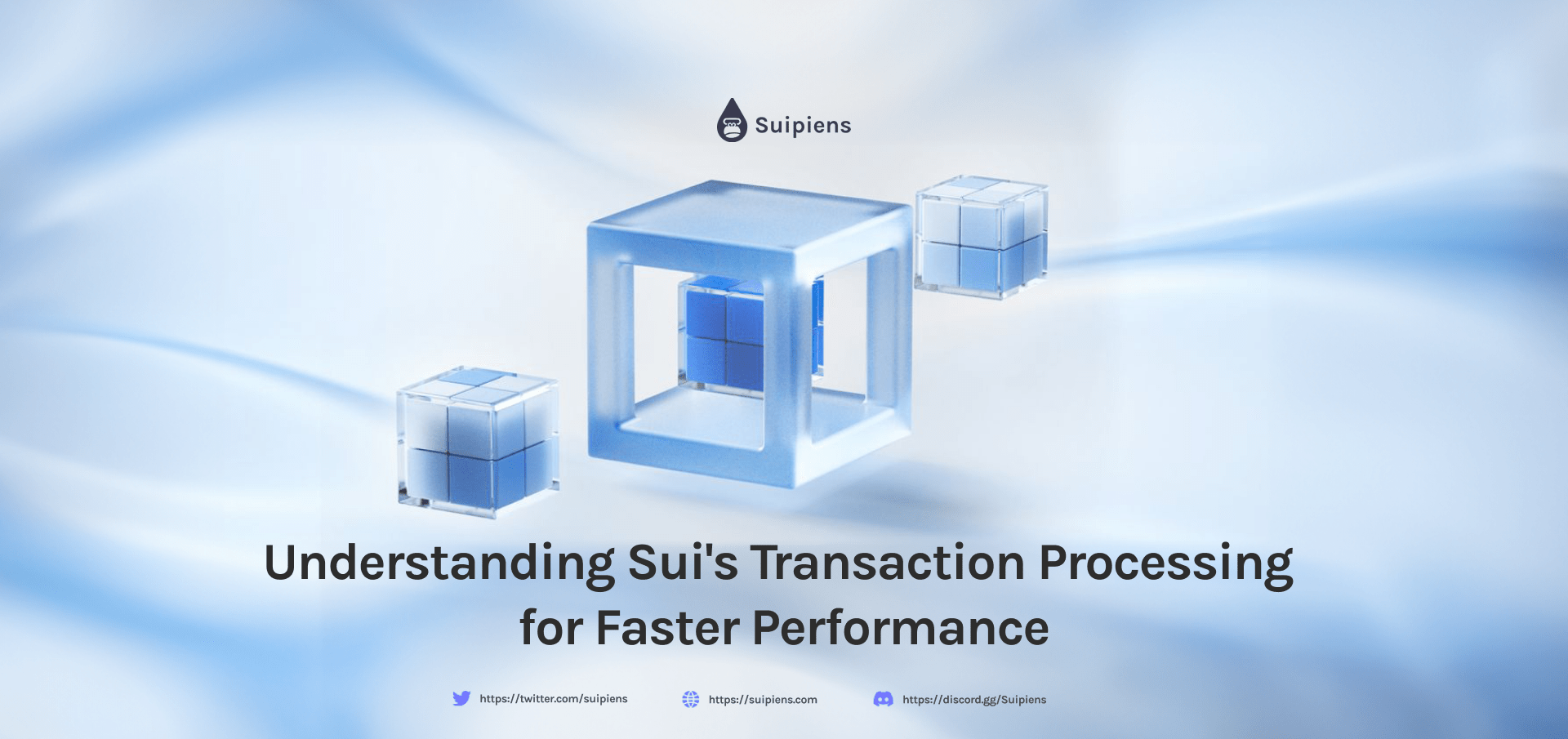Understanding Sui's Transaction Processing for Faster Performance

Discover how Sui's unique transaction processing, with a focus on shared objects, delivers high-speed performance and consistent data state.
Sui is a blockchain platform that offers fast and efficient transaction processing. Compared to other blockchains, Sui stands out due to its unique hybrid approach. It has been tested to handle up to 297,000 transactions per second, resulting in near-instantaneous response times for users in apps and games.
Understanding Transactions in the Blockchain World
In the world of blockchain, transactions play a crucial role in how apps function. When you perform actions in an app, such as buying or selling items, a process involving Validators and Nodes that make up the network is triggered. Sui's approach to transaction processing focuses on individual objects and the changes made to them. These changes can involve transferring ownership or transforming the appearance of an object.
Decentralized Network Transactions
In decentralized networks like Sui, independent operators run the servers that support the infrastructure. These networks require transaction approval and the dissemination of data changes across the network. In the context of Sui, all Validators and Nodes share a global data state.
Consider the example of Netflix. In private networks, transactions are processed within internal servers that implicitly trust each other. These servers handle user account records and determine which accounts can access specific files. In decentralized networks like Sui, all the servers maintain a consistent global state. For example, if someone creates an NFT video file on Sui and transfers ownership to another user on the network, all the servers in the network will record this ownership change. This ensures agreement on ownership and other parameters for each file.
Sui's Consensus Mechanism
Sui distinguishes itself through its consensus mechanism and object types. It defines two main object types: shared objects and single-owner objects. Shared objects, such as multiplayer games or shops, can be modified by multiple people. In contrast, only the owner of a single owner object can make changes to it. Sui's consensus system ensures the legitimacy of shared object transactions and maintains the network's integrity.
The consensus process involves Validators assessing whether a transaction should be approved. Let's take the example of a chess game app running on Sui. The chess game is represented as a shared object, allowing each player to affect its state during their turns. Each turn initiates a transaction on the network that requires approval from Validators to maintain the network's integrity. Validators vote on whether a move is a legitimate change to the chess game object. If enough Validators vote yes, the transaction is approved, and the opposing player can make their move.
This consensus process happens swiftly, with minimal lag for users. For instance, chess game players would experience minimal delay, even less than typical internet lag.
Tested Performance
Sui's performance has been extensively tested to ensure its efficiency. In an initial proof of concept, the team demonstrated that a Validator running on an 8-core M1 MacBook Pro could process 120,000 transactions per second at peak traffic. With further refinements, Sui achieved even better performance. Using a network with 100 geographically distributed Validators, resembling the now deployed Sui Mainnet, the team saw a maximum throughput of 297,000 transactions per second using a 24-core AMD machine with 256GB memory.
Built for Efficiency
Sui's original designers evaluated the architecture and features of other blockchains to create a more performant network. The consensus mechanism was a particular focus for improvement. By requiring consensus only for shared object transactions, Sui reduces the load on the consensus mechanism compared to other blockchains where every transaction must go through consensus.
Sui's object-oriented data model also plays a crucial role in its efficiency. It allows developers to choose the right object types for their apps, offering flexibility and optimization.
Wrapping up
In conclusion, Sui revolutionizes transaction processing in the blockchain world with its emphasis on shared objects and optimized consensus mechanism. With exceptional performance, near-instantaneous response times, and the ability to handle up to 297,000 transactions per second, Sui surpasses traditional blockchain limitations.
Check out the tutorial series to learn more about Sui and its features. It provides insights into programming shared objects on Sui. Additionally, you can delve deeper into Sui's consensus mechanism, including the high-throughput mempool and consensus engines known as Narwhal and Bullshark, which efficiently process transactions. Let's all embrace the future of transaction processing with Sui, where speed, efficiency, and a consistent global data state redefine the blockchain experience.
Be sure to check out Suipiens' website and social media channels to stay up-to-date on all things about Sui Blockchain!

